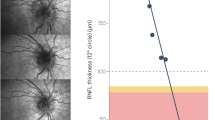Abstract
Background
Idiopathic intracranial hypertension (IIH), also known as pseudotumor cerebri, is a disorder of unknown etiology, predominantly affecting obese women of childbearing age. IIH is uncommon in men, with a reported female-to-male ratio of 8:1. The pathogenesis of IIH is poorly understood. Several mechanisms have been suggested, but no one mechanism has been able to account for all manifestations of the disease. This research aims to characterize the obesity phenotype(s) of men with IIH in order to find potential inducers for this disease.
Methods
This is a cross-sectional study based on subjects’ medical records. It compared anthropometric parameters between 22 men with IIH, 60 healthy men, and 44 females with IIH. One-way analysis with age and body mass index included as covariates was applied for the assessment of the difference in fat distribution among the three groups.
Results
No significant differences were observed between the male IIH cohort and healthy males for age, BMI, and waist measurements, whereas hip circumference was significantly larger in the IIH cohort (114 ± 13 vs. 104 ± 16 cm; respectively, p < 0.001). Consequently, waist-to-hip ratio (WHR) was significantly lower in the male IIH cohort (0.88 ± 0.08 vs. 0.95 ± 0.12; p < 0.001). While no significant differences were observed for age and hip measurements between male IIH and female IIH cohorts, waist circumference and waist-to-hip ratio (WHR) were significantly larger in the male cohort (102 ± 19 cm vs. 95 ± 13 cm, p < 0.001; 0.88 ± 0.08 vs. 0.78 ± 0.06, p < 0.001, respectively). All these results maintained after adjustment for age and BMI.
Conclusions
This is the first report of body fat distribution patterns in men with IIH. Whereas male IIH have larger central fat deposition than female IIH patients, abdominal fatness is less accentuated in IIH men compared to normal obese men. The later observation is in agreement with similar results regarding female IIH patients. We believe that these findings justify further investigation into the involvement of various fat depots in the pathogenesis of IIH in men and women alike.

Similar content being viewed by others
References
Ahlskog JE, O’Neill BP (1982) Pseudotumor cerebri. Ann Intern Med 97:249–256
Binder DK, Horton JC, Lawton MT, McDermott MW (2004) Idiopathic intracranial hypertension. Neurosurgery 54:538–552
Durcan FJ, Corbett JJ, Wall M (1988) The incidence of pseudotumor cerebri. Population studies in Iowa and Louisiana. Arch Neurol 45:875–877
Bruce BB, Kedar S, Van Stavern GP, Monaghan D, Acierno MD, Braswell RA, Preechawat P, Corbett JJ, Newman NJ, Biousse V (2009) Idiopathic intracranial hypertension in men. Neurology 72:304–309
Digre KB, Corbett JJ (1988) Pseudotumor cerebri in men. Arch Neurol 45:866–872
Expert Panel on the Identification, Evaluation, and Treatment of Overweight in Adults (1998) Clinical guidelines on the identification, evaluation, and treatment of overweight and obesity in adults: executive summary. Am J Clin Nutr 68:899–917
Garrow J (1991) Importance of obesity. BMJ 303:704–706
Rexrode KM, Carey VJ, Hennekens CH, Walters EE, Colditz GA, Stampfer MJ, Willett WC, Manson JE (1998) Abdominal adiposity and coronary heart disease in women. JAMA 280:1843–1848
Report of a WHO consultation (2000) Obesity: preventing and managing the global epidemic. World Health Organ Tech Rep Ser 894:1–253
Abate N, Garg A, Peshock RM, Stray-Gundersen J, Grundy SM (1995) Relationships of generalized and regional adiposity to insulin sensitivity in men. J Clin Invest 96:88–98
Carr DB, Utzschneider KM, Hull RL, Kodama K, Retzlaff BM, Brunzell JD, Shofer JB, Fish BE, Knopp RH, Kahn SE (2004) Intra-abdominal fat is a major determinant of the National Cholesterol Education Program Adult Treatment Panel III criteria for the metabolic syndrome. Diabetes 53:2087–2094
Fernandez JR, Heo M, Heymsfield SB, Pierson RN, Pi-Sunyer FX, Wang ZM, Wang J, Hayes M, Allison DB, Gallagher D (2003) Is percentage body fat differentially related to body mass index in Hispanic Americans, African Americans, and European Americans? Am J Clin Nutr 77:71–75
Horber FF, Gruber B, Thomi F, Jensen EX, Jaeger P (1997) Effect of sex and age on bone mass, body composition and fuel metabolism in humans. Nutrition 13:524–534
Kesler A, Kliper E, Shenkerman G, Stern N (2010) Idiopathic intracranial hypertension is associated with lower body adiposity. Ophthalmology 117:169–174
Dandy WE (1937) Intracranial pressure without brain tumor: diagnosis and treatment. Ann Surg 106:492–513
Report of a WHO Expert Committee (1995) Physical status: the use and interpretation of anthropometry. World Health Organ Tech Rep Ser 854:1–452
Friedman DI, Jacobson DM (2002) Diagnostic criteria for idiopathic intracranial hypertension. Neurology 59:1492–1495
Radhakrishnan K, Ahlskog JE, Garrity JA, Kurland LT (1994) Idiopathic intracranial hypertension. Mayo Clin Proc 69:169–180
Ooi LY, Walker BR, Bodkin PA, Whittle IR (2008) Idiopathic intracranial hypertension: can studies of obesity provide the key to understanding pathogenesis? Br J Neurosurg 22:187–194
Sugerman HJ, DeMaria EJ, Felton WL, Nakatsuka M, Sismanis A (1997) Increased intra-abdominal pressure and cardiac filling pressures in obesity-associated pseudotumor cerebri. Neurology 49:507–511
Spentzas T, Henricksen J, Patters AB, Chaum E (2010) Correlation of intraocular pressure with intracranial pressure in children with severe head injuries. Pediatr Crit Care Med 11:593–598
Financial support
None.
Conflict of interest
No authors have any financial/conflicting interests to disclose.
Author information
Authors and Affiliations
Corresponding author
Additional information
Roy Schwartz and Efrat Kliper contributed equally to this work.
Rights and permissions
About this article
Cite this article
Schwartz, R., Kliper, E., Stern, N. et al. The obesity pattern of idiopathic intracranial hypertension in men. Graefes Arch Clin Exp Ophthalmol 251, 2643–2646 (2013). https://doi.org/10.1007/s00417-013-2420-6
Received:
Revised:
Accepted:
Published:
Issue Date:
DOI: https://doi.org/10.1007/s00417-013-2420-6




